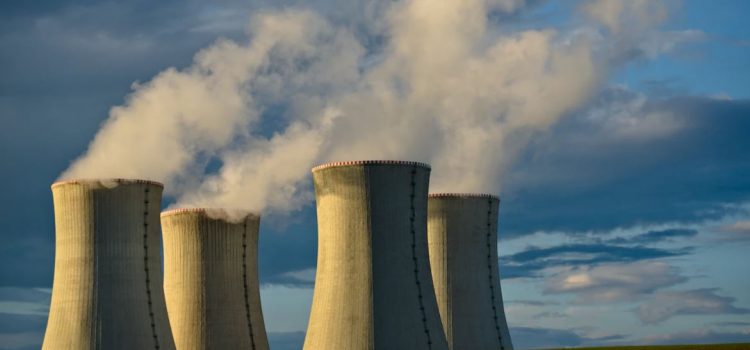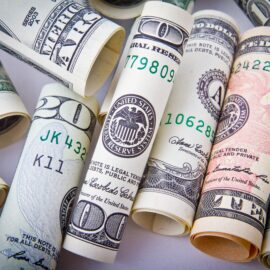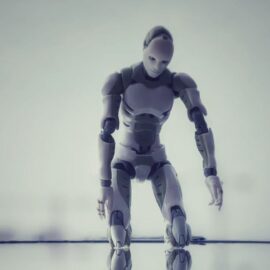

This article is an excerpt from the Shortform book guide to "Apocalypse Never" by Michael Shellenberger. Shortform has the world's best summaries and analyses of books you should be reading.
Like this article? Sign up for a free trial here.
How costly are nuclear power plants? Can they keep up with growing energy demands? How safe are they?
We can’t get away from our dependence on energy. Michael Shellenberger argues that nuclear is the way to go. He explains the benefits of nuclear power and addresses the reservations and misconceptions many people have about it.
Read on to understand Shellenberger’s argument for nuclear power, and see whether you’re convinced.
Nuclear Power Has Its Benefits
The primary driver of climate change, and the most important issue to tackle, is society’s ever-growing energy consumption. Shellenberger suggests that, as much as wind and solar power meet the romantic ideal of “natural energy,” they simply don’t meet the energy needs of present-day or future generations. What’s needed instead is a clean, energy-dense alternative. It’s with this that Shellenberger goes on to make an argument for nuclear power. He discusses the benefits of nuclear power, including its reliability, its productiveness, and the minimal impact it has on the environment.
(Shortform note: Nuclear reactors derive power from the breakdown of unstable uranium atoms into lighter elements through the process of nuclear fission. Fission is a natural process, which is why some parts of the world are naturally radioactive. However, inside a nuclear reactor, the fission process is accelerated due to a chain reaction in which neutrons expelled from one uranium atom strike others with enough force to break them apart as well. The energy released by the fission chain reaction is used to heat water into steam, which drives a turbine that produces electric power.)
Nuclear power is the most energy-dense fuel source we have available—the amount of nuclear fuel required to generate power is infinitesimal next to the amount of fossil fuels burned by coal and natural gas plants. It’s reliable and affordable enough to provide for the world’s rising energy needs. Building nuclear plants has been costly in the US, which Shellenberger attributes to environmental regulations purposely designed to make nuclear power cost-prohibitive. However, in countries such as South Korea, assembly-line construction techniques have been shown to reduce the cost of newly designed nuclear plants. Modern plants also last longer with less upkeep than those in the US, which are based on designs from the 1960s.
(Shortform note: Getting nuclear power off the ground in the US is difficult, but not impossible. At present, the US’s only active nuclear construction project is Plant Vogtle in Waynesboro, Georgia. Plant Vogtle went active in the 1980s, and its expansion units #3 and #4 will be the first new reactors built in the US in over 30 years. The project has met delays and cost overruns, from an initial budget of $14 billion to over $30 billion. Independent observers blame much of the delays on a backlog of paperwork associated with the project. Meanwhile, construction of a next-generation nuclear plant is scheduled to begin in Kemmerer, Wyoming, as early as 2024.)
Unlike the byproducts of other power sources, nuclear waste is not released back into the environment. Once used, nuclear fuel rods are cooled, then encased in nigh-impregnable steel and concrete. Even if a container were to break, which Shellenberger says is highly unlikely, very little would get loose into the environment because there’s so little of it to begin with. There are many places in the world where the natural background radiation is higher than that at man-made radiation sites.
(Shortform note: Nuclear waste isn’t limited to used fuel rods. It also includes equipment and clothing exposed to radioactive materials. There are currently four disposal sites for such low-level radioactive waste in the US, while spent fuel rods are stored near the reactors themselves. In 1987, Nevada’s Yucca Mountain was proposed as a permanent nuclear waste repository, though work toward that goal remains in perpetual limbo due to political opposition from various sources, now including the Biden administration. In the meantime, advanced nuclear designs may eventually allow us to reuse and recycle fuel rods from older plants.)
The most realistic cause of nuclear material being released into the wild is in the case of a reactor meltdown, of which there have been three—at Three Mile Island in 1979, Chernobyl in 1986, and Fukushima in 2011—but the impact of those accidents is widely overstated. The Chernobyl disaster resulted in fewer than 100 deaths attributed to radiation. For the other two incidents, the nuclear death toll was zero. Shellenberger points out that other energy-related disasters have been far more devastating, such as the collapse of the Banqiao hydroelectric dam that resulted in 200,000 deaths. Yet no one has called for a ban on hydroelectric power.
| The Danger of Nuclear Meltdowns A nuclear reactor meltdown occurs when there isn’t enough water to cool the superheated fuel rods in the reactor’s core. When this happens, a chain reaction can begin that results in even greater overheating and pressure, which can melt the fuel rods, clog the cooling lines, and produce a steam explosion, releasing radioactive material into the air and possibly harming people close by. The 1986 Chernobyl meltdown was caused by a poor reactor design that failed during a cooling system test. The 2011 Fukushima meltdown was triggered when a massive tsunami damaged the cooling systems of three of the nuclear plant’s four reactors. In The Design of Everyday Things, Don Norman explains that the Three Mile Island incident resulted from a feedback loop of human error caused by a faulty indicator light. The fact that such a simple flaw could lead to catastrophe calls the safety of nuclear power into question, but the same is true for any system in which humans and machines interact. The problem is ultimately one of design, and in How to Avoid a Climate Disaster, Bill Gates insists that new designs for nuclear plants make meltdowns nearly impossible. |

———End of Preview———
Like what you just read? Read the rest of the world's best book summary and analysis of Michael Shellenberger's "Apocalypse Never" at Shortform.
Here's what you'll find in our full Apocalypse Never summary:
- An assessment of the climate crisis from a rational perspective
- How climate change alarmists are doing more harm than good
- The problems with renewable energy and why we should switch to nuclear






